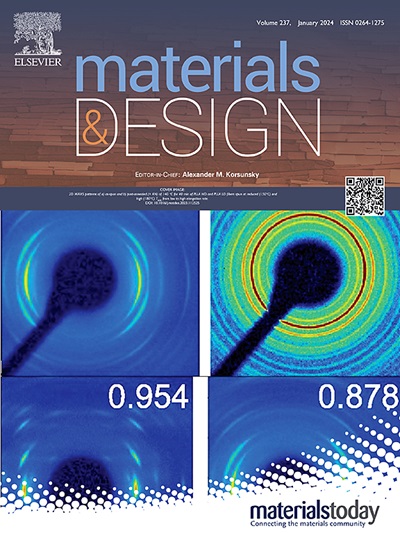Stackable 3D-printed core-shell nozzle system for multi-shell fiber and microdroplet generation
IF 7.6
2区 材料科学
Q1 MATERIALS SCIENCE, MULTIDISCIPLINARY
引用次数: 0
Abstract
Microfluidics is increasingly utilized in biofabrication to create more complex fiber and droplet structures, including those that involve multiple materials. Layered and core-multiple shell structures are of particular interest as templates for biofabrication and cell growth. Traditional fabrication methods often rely on fixed coaxial, triaxial or quadaxial needles, which are costly and prone to clogging, particularly for smaller inner diameters. Here, we introduce a versatile system based on a 3D printed nozzle which combines two flows: an inner core- and an outer shell-flow. The outlet is fitted with a glass capillary, allowing control of the fiber diameter by adjusting the capillary. The design facilitates the modular “LEGO®-Brick” stacking of multiple nozzles, enabling the efficient fabrication of complex fibers. We demonstrate the production of alginate (Alg)-methyl cellulose (MC) composite fibers with variable diameters. Additionally, when the shell was filled with an oil phase and the core with a water phase, microdroplets with controlled diameters were effectively generated. The two-flow system also enables the extrusion of graphene oxide (GO)-based fibers and microbeads, which are widely-used structures in various applications. To demonstrate the capability of the designed nozzle for biofabrication, C2C12 cell-laden GO-based fibers and microbeads were fabricated, exhibiting excellent post-fabrication cell viability.

求助全文
约1分钟内获得全文
求助全文
来源期刊

Materials & Design
Engineering-Mechanical Engineering
CiteScore
14.30
自引率
7.10%
发文量
1028
审稿时长
85 days
期刊介绍:
Materials and Design is a multi-disciplinary journal that publishes original research reports, review articles, and express communications. The journal focuses on studying the structure and properties of inorganic and organic materials, advancements in synthesis, processing, characterization, and testing, the design of materials and engineering systems, and their applications in technology. It aims to bring together various aspects of materials science, engineering, physics, and chemistry.
The journal explores themes ranging from materials to design and aims to reveal the connections between natural and artificial materials, as well as experiment and modeling. Manuscripts submitted to Materials and Design should contain elements of discovery and surprise, as they often contribute new insights into the architecture and function of matter.
 求助内容:
求助内容: 应助结果提醒方式:
应助结果提醒方式:


